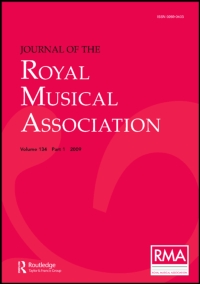No CrossRef data available.
Article contents
The Recent Inventions for Reproducing the Sound of the Human Voice
Published online by Cambridge University Press: 01 January 2020
Extract
Not much more than a year ago the world was startled by the announcement of Professor Graham Bell's marvellous invention—the electric telephone—which rendered it possible to talk by telegraph.
The successful solution of a problem which had hitherto baffled all attempts excited universal interest, and has had the effect of directing considerable attention to the science of acoustics, particularly to that part of the subject which relates to the human, voice.
- Type
- Research Article
- Information
- Copyright
- Copyright © Royal Musical Association, 1878
References
∗ Sir William Thomson.Google Scholar
∗ On the 27th of February, 1879, an instrument was exhibited to the Royal Society by Messrs. Preece and Stroh, containing a series of small brass wheels, upon the peripheries of which were cut such indentations as above described: when these wheels were made to rotate successively under a spring connected with a diaphragm, all the vowel sounds were very accurately reproduced.Google Scholar


